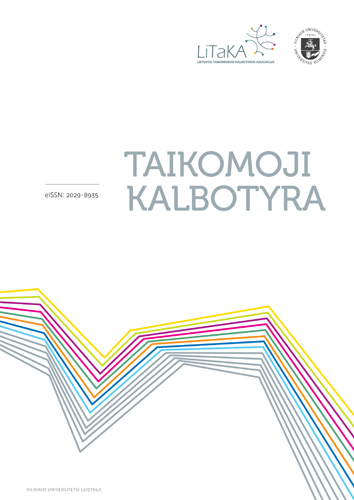Alkoholio prevencijai skirtų socialinių reklamų vaizdatekstis. Įtikinimo būdai
Anti-alcohol advertisements. Persuasion techniques
Author(s): Rūta Angelė VilkelytėSubject(s): Sociolinguistics, Marketing / Advertising
Published by: Vilniaus Universiteto Leidykla
Keywords: pragmatics; social advertising; interpersonal function; addressee; solidarity; demonstration of power;
Summary/Abstract: This paper analyses anti-alcohol social advertisements. Assuming that in social advertising both linguistic and visual means of persuasion are used to provoke the addressee’s reaction, the author aims at determining the most dominating and effective linguistic and non-linguistic means of persuasion employed in social advertising. The methods of semiotic analysis and the qualitative target addressees’ interview are combined to achieve this aim. The semiotic analysis is used to determine visual and verbal means of persuasion used in social advertisements, while the qualitative interview is employed to assess their suggestibility. The results suggest that different persuasion techniques are targeted at different age groups. Advertising aimed at young people often portrays famous people of Lithuania. The text of such advertisements is usually written as friendly advice based on the author’s personal experience. The demonstration of solidarity is considered to be an effective technique; therefore, the personal pronouns I, my, you, your are common. In the advertisements aimed at seniors it is common to emphasise death, which is usually expressed by contrasting black and white. Such choice of colours creates a frustrating and inhospitable atmosphere and is effective in reaching persuasion. Slogans are usually short, which allows the addressee to concentrate on the essential elements of the advertisement. In addition, slogans are often impersonal, which creates some distance from the addressee. This sanction has been positively evaluated by the respondents. In advertisements, which intend to affect a large number of the population, the implicit addressee, usually bright colours prevail; however, this sanction disturbs the addressees.
Journal: Taikomoji kalbotyra
- Issue Year: 2016
- Issue No: 8
- Page Range: 72-106
- Page Count: 35
- Language: Lithuanian

